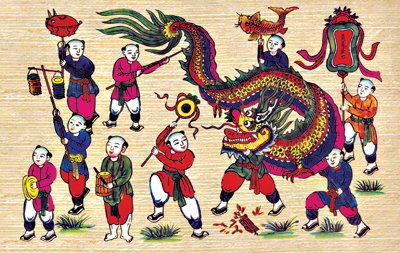Dragon dances
VGP – In Asian culture, dragons are considered sacred animals, which have extraordinary powers and are the symbols of luck and good omens. Dragon also represents national power and is the racial origin of people in some Asian countries.
 |
To promote the art, the Ha Noi Department of Culture, Sports and Tourism held “Ha Noi Dragon Dance Festival 2012” at My Dinh National Stadium that drew the participation of 28 troupes with 50 dragons from districts and towns in Ha Noi.
At the festival, the troupes entertained the audiences with impressive and beautiful performances. Some of the acts were meticulously choreographed with four sacred animals, including the dragon, unicorn, turtle and phoenix that showed the artist’s talent and devotion to preserving traditional culture.
 |
| Chèn chú thích ảnh vào đây |
The festival was a community cultural event of great significance that not only provided people an opportunity to enjoy the traditional and folk art, but also contributed to preserving national cultural values and promoting the pride of Hanoians.
By Tran Thanh Giang-Cong Dat
